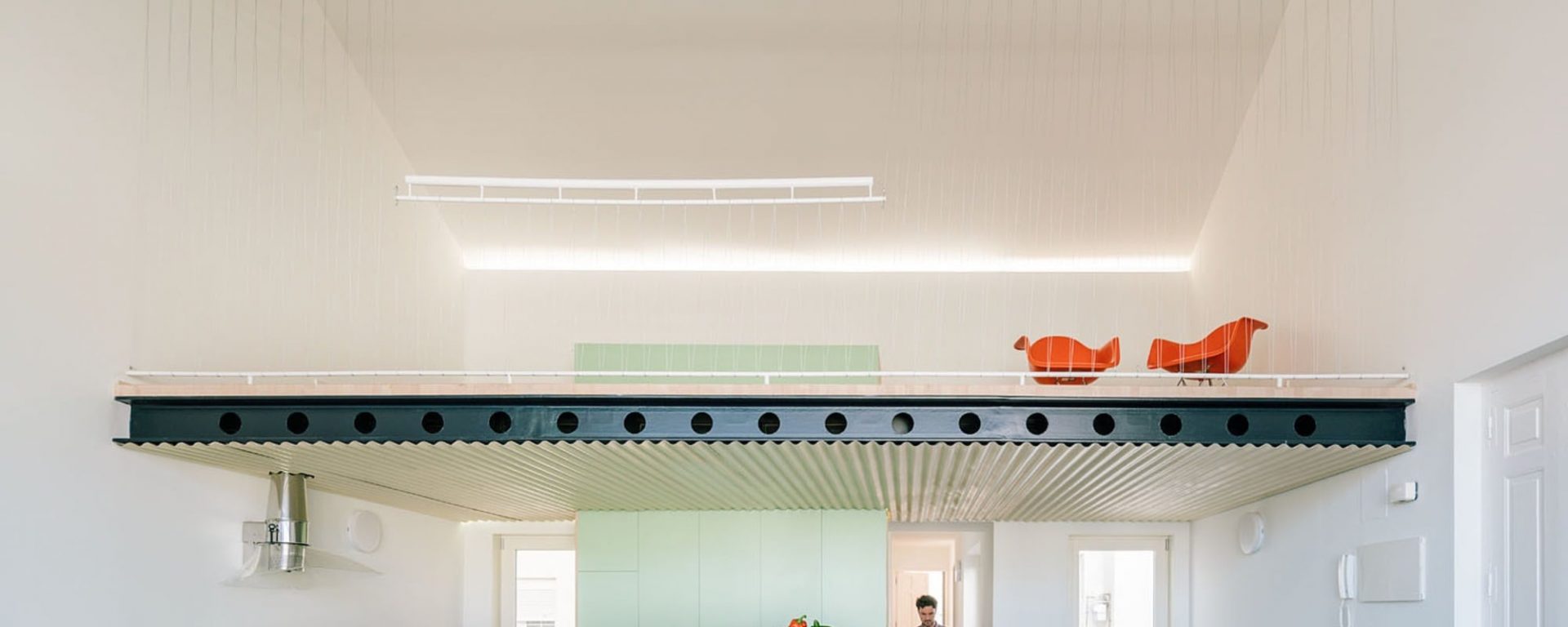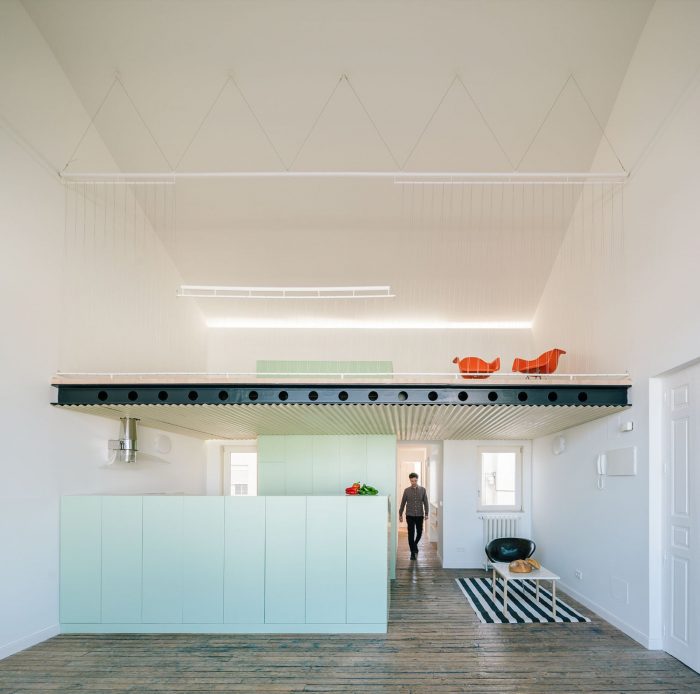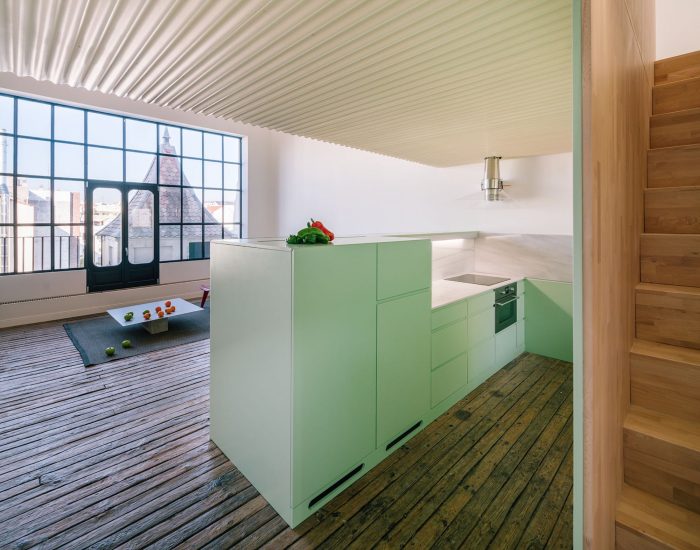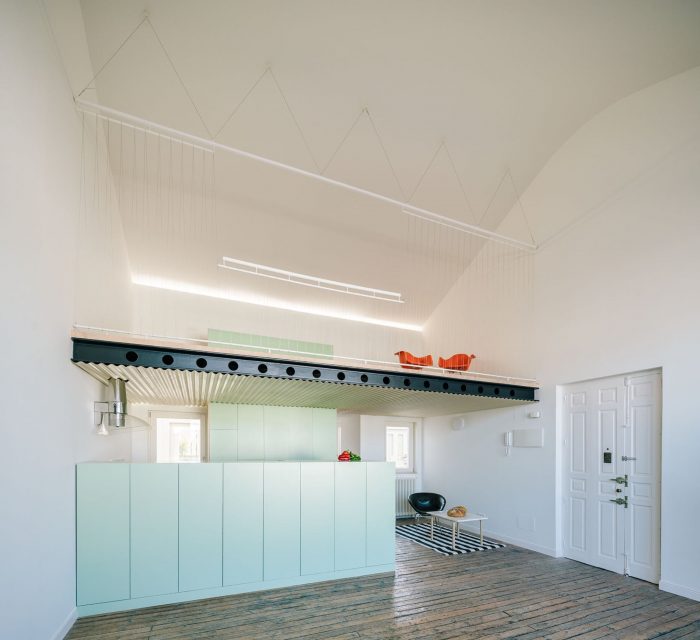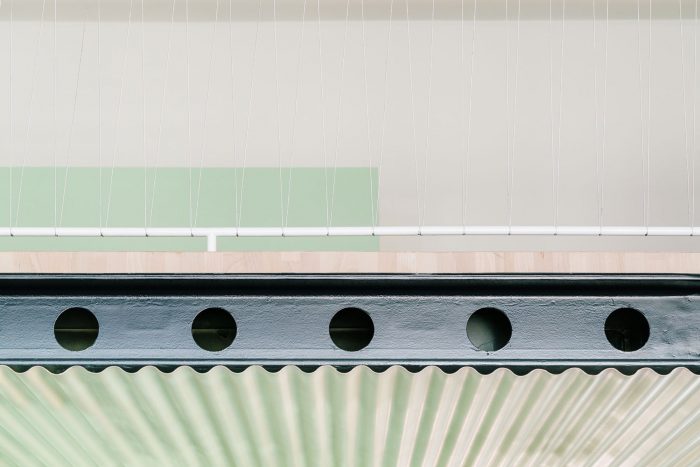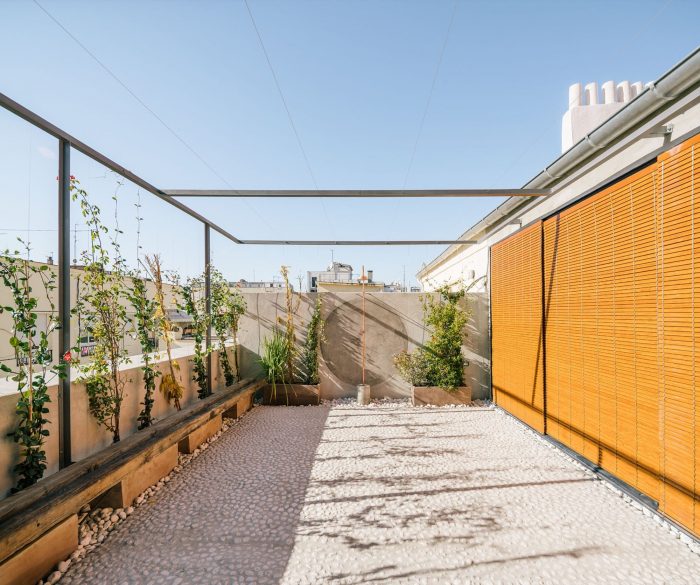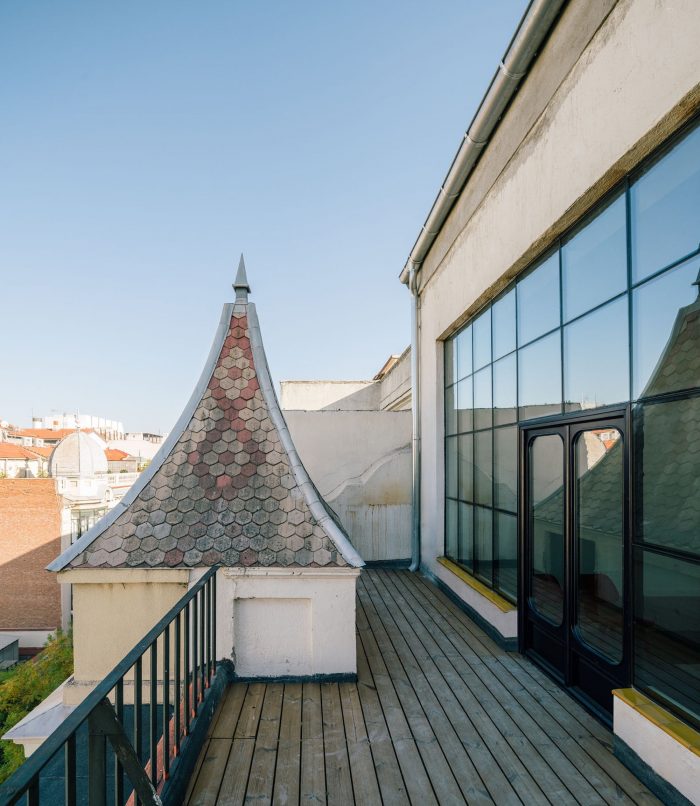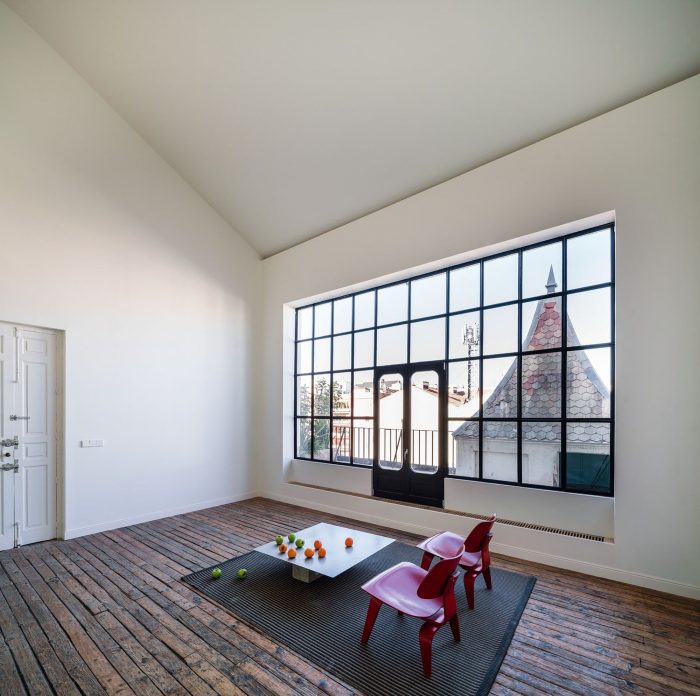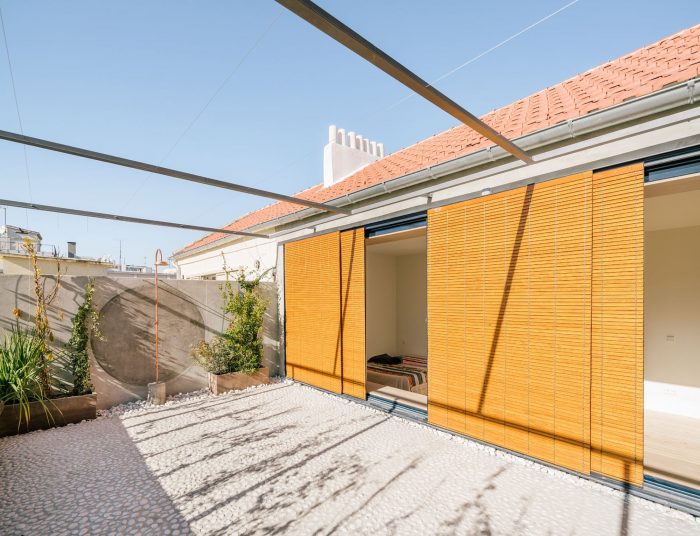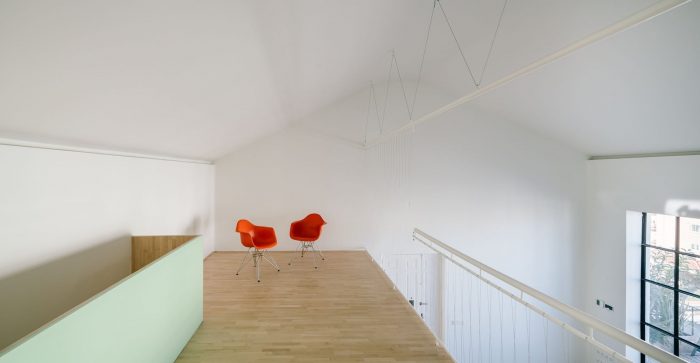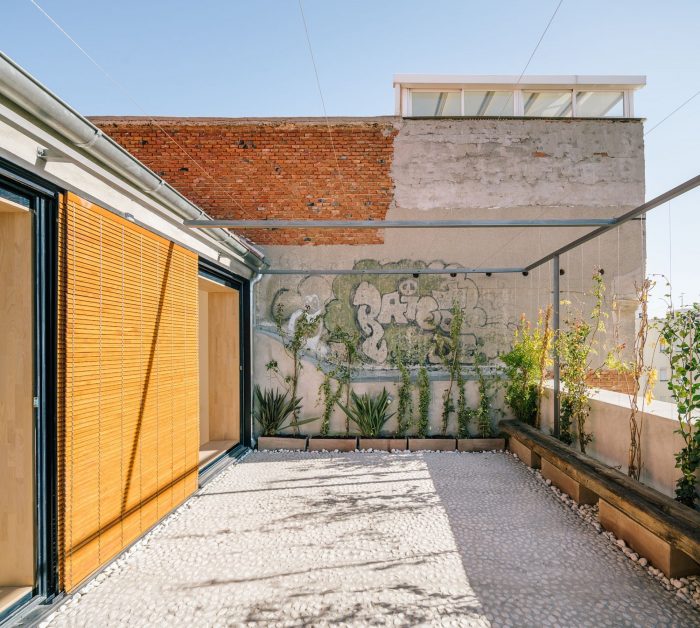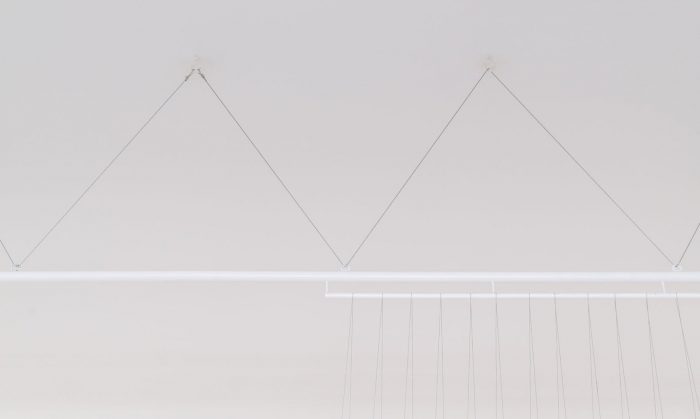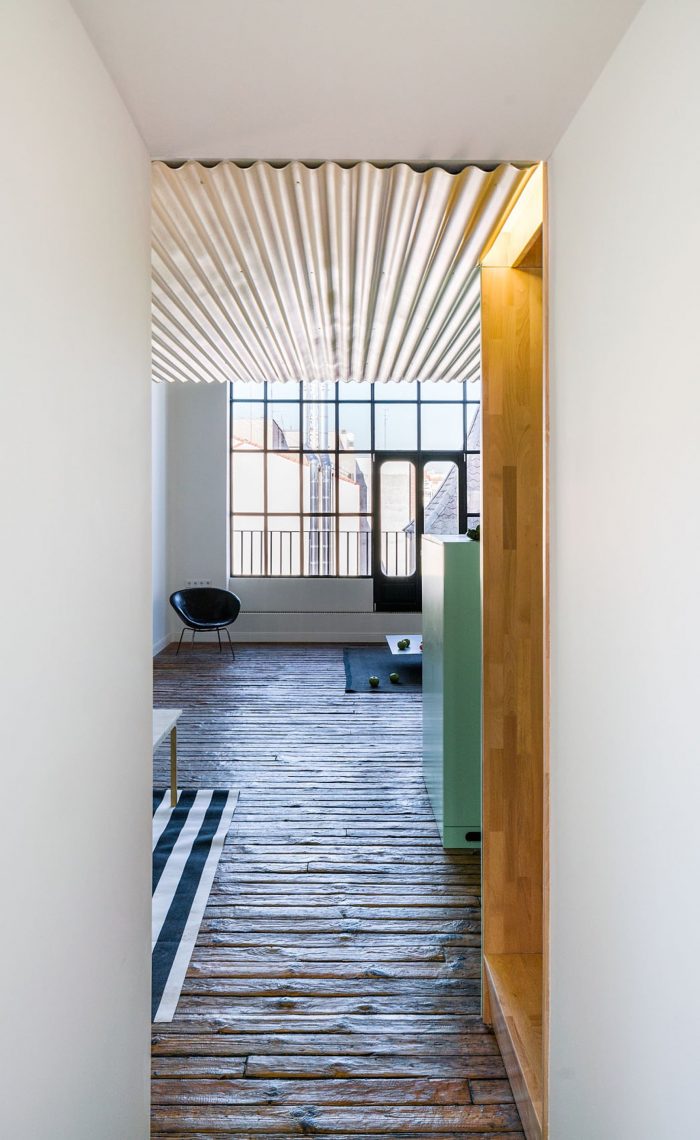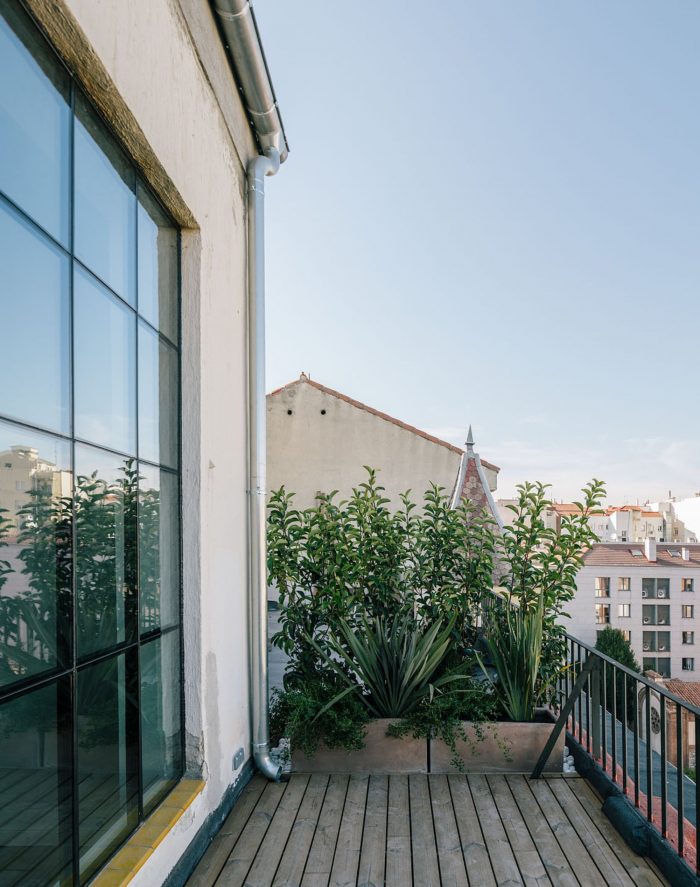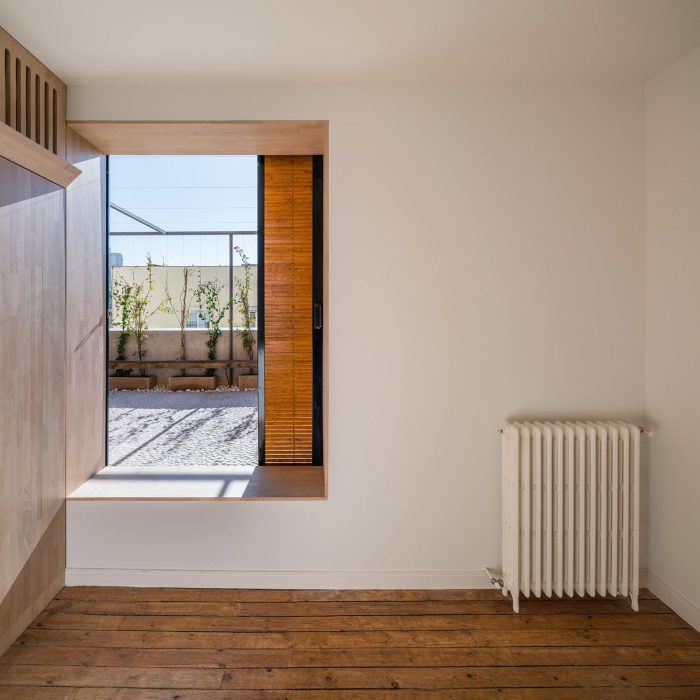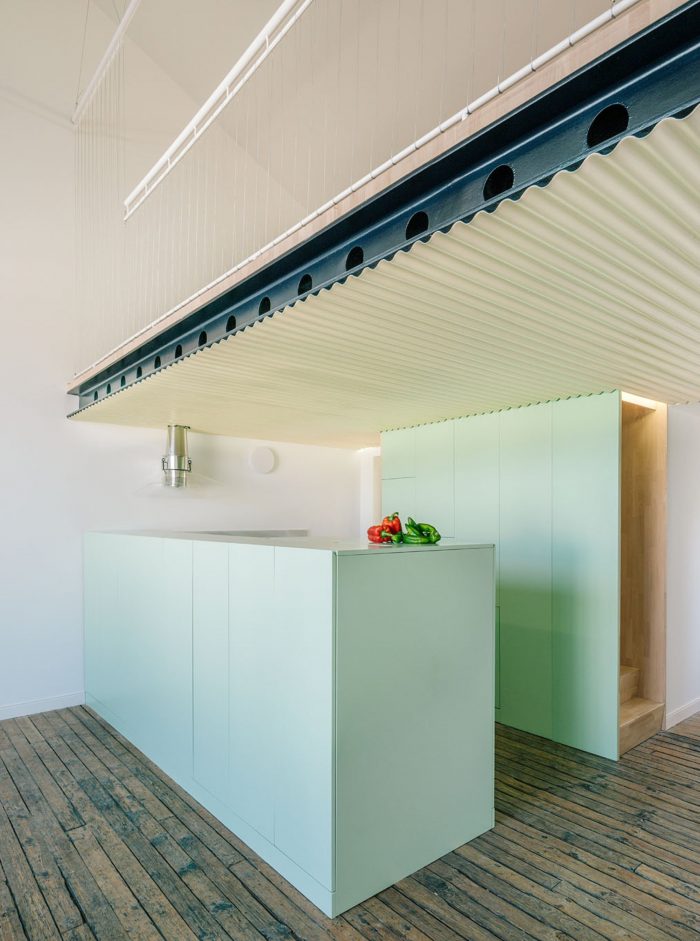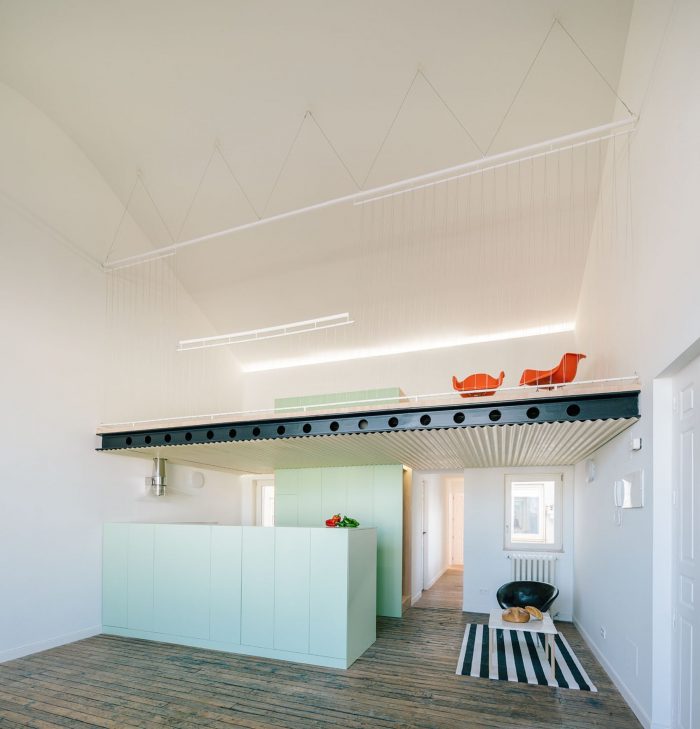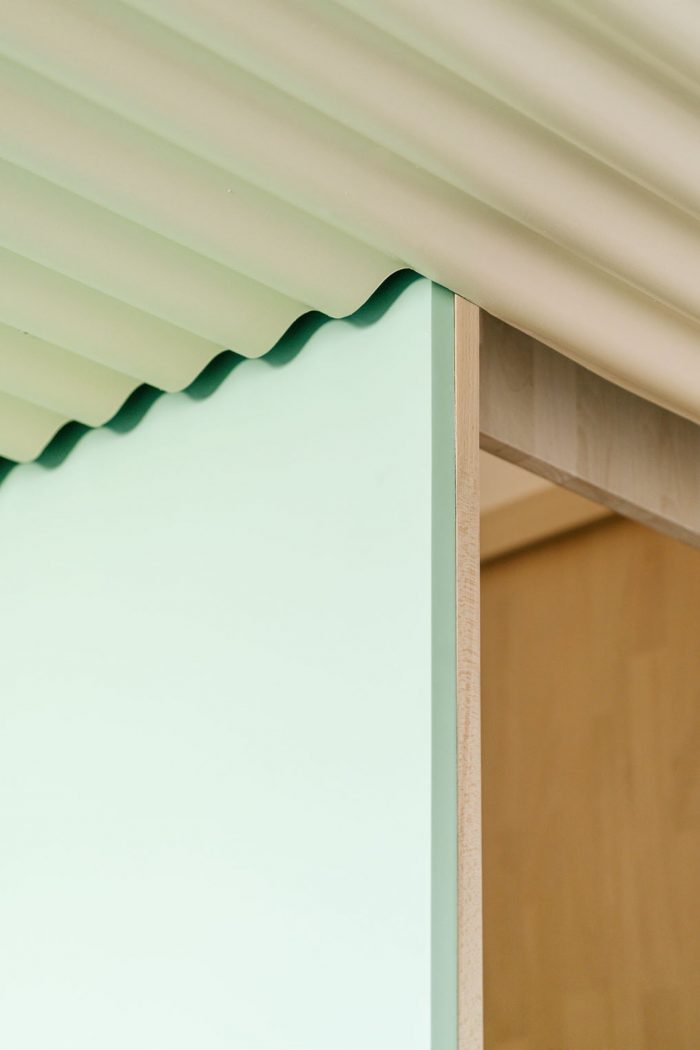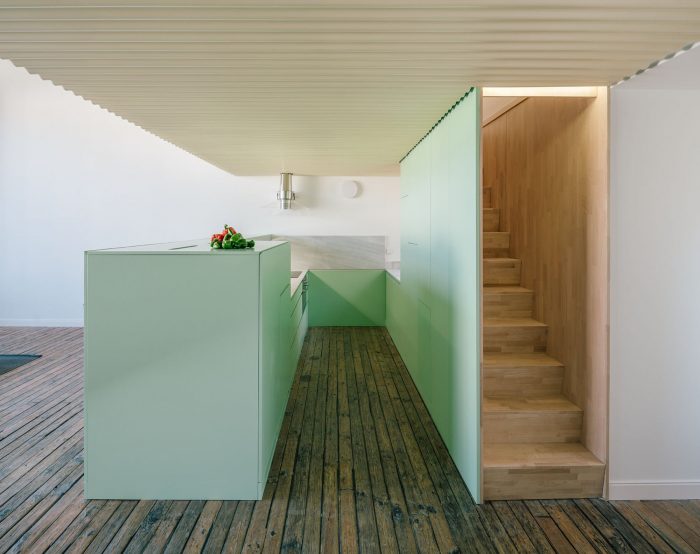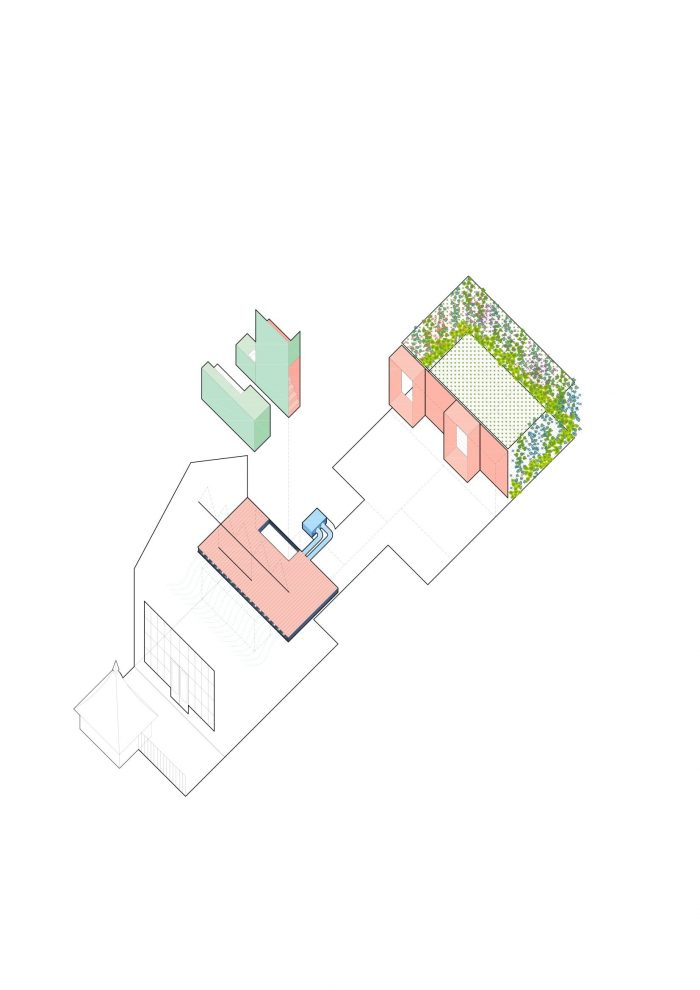阁楼构成了一个奇特的城市地理环境。作为建筑物的顶部,它们可以显示出令人惊讶的奇异之处,而当人们在地面上漫步于城市时,是很难想象的。冲天炉、凉亭、露台和塔楼与枝繁叶茂的种植园、纺织品的幻想、非法的透明围栏和倾斜的瓦片屋顶共享空间。这个项目与这个幻想的世界联系在一起,它通过恢复场地令人惊叹的原始特征和发明接近木工和园艺的建筑操作来利用这个世界。
Attics comprise a peculiar urban geography. As the tops of buildings, they can reveal surprising singularities that are hard to imagine when one is strolling through a city at ground level. Cupolas, pavilions, terraces and towers share the space with leafy plantations, delusions in textile, illegal transparent enclosures and sloping tiled roofs. This project is linked to this world of fantasy, which it exploits through the restoration of the site’s stunning original features and the invention of architectural operations close to woodwork and gardening.
阁楼位于马德里Barrio de Salamanca的一条特色街道上,是一栋典型的二十世纪资产阶级建筑的第七层的一部分。它原来是一所美术学院的所在地。从本质上讲,它拥有传统绘画工作室的所有特质:一个带有高耸的坡屋顶的主体,在脊梁处达到7米的高度,拥有一个朝北的大型铁架窗,为工作空间提供均匀的照明。其余的结构元素由较小的体量组成,围绕着两个室内天井和建筑的后立面排列。外墙的后退使人们有可能在两个单一的空间享受户外活动。在北侧,有一个拉长的露台,可以直接看到风景如画的炮台。南边的露台提供了一个广阔的、奇妙的空间,其尺寸大到足以被认为是一个完整的其他房间。
Located on a characteristic street in Madrid’s Barrio de Salamanca, the attic forms part of the seventh floor of a typical bourgeoisie twentieth-century building. It originally housed an Academy of Fine Arts. In essence, it possesses all of the qualities of traditional painting studios: a principal volume with a soaring gabled roof, which reaches a height of 7 meters at the ridge beam and boasts a large north-facing bank of iron-framed windows that provide an even illumination to the work space. The rest of the structural elements are made up of smaller volumes arranged around two interior patios and the building’s rear facade. The setbacks on the facades make it possible to enjoy the outdoors in two singular spaces. On the north side, there is an elongated terrace with direct views of a picturesque turret. The south terrace offers an expansive and wonderfully-oriented space with large enough dimensions to be thought of as a whole other room.
该项目遵循两个策略。第一是保持所有使原来的空间如此独特的特征:我们尊重引人注目的体积,美丽的分格画窗,老松木地板和原来的木门。第二是通过具体的操作,与大型家具或花园元素的建造逻辑相一致,对该空间进行改造。在主要区域,我们重建了一个岌岌可危的阁楼,使用的解决方案既解决了结构和空调问题,又将其视觉影响降到最低。阁楼下的空间被用来做厨房、通往下一层的楼梯和储藏室。在房间里,一堵壁橱和一扇窗户与外部形成了一个可渗透的边界。南面的露台被设想为另一个房间,其中的攀缘藤蔓网络(玫瑰、紫藤、常春藤和茉莉花)将创造一个芳香的、亲密的和享乐主义的绿洲。
The project followed two strategies. The first was to maintain all of the singular features that made the original space so unique: we respected the striking volume, the beautiful divided panes of the picture window, the old pine floors and the original wood doors. The second was to work on the space through specific operations that were coherent with the logic of the building of large-scale furniture or garden elements. In the main area, we rebuilt a precarious loft using a solution that resolved both structural and air conditioning issues, minimizing its visual impact. The space under the loft was used for the kitchen, the staircase to the next level and storage. In the rooms, a wall of closets and a window form a permeable border with the exterior. The south terrace was conceived of as another room, in which a network of climbing vines (roses, wisteria, ivy and jasmine) will create an aromatic, intimate and hedonistic oasis.
Architects: Langarita Navarro Arquitectos
Year : 2017
Collaborators : Policarpo del Canto, Havi Navarro
Constructor : Manuel Ocaña Fast & Furious Production Office SL
Structures : Mecanismo
Facilities : Mecanismo
Landscaping : Ambienta
Architects In Charge : María Langarita, Víctor Navarro
City : Madrid
Country : Spain

